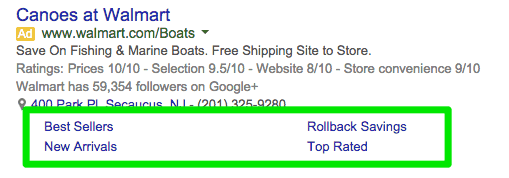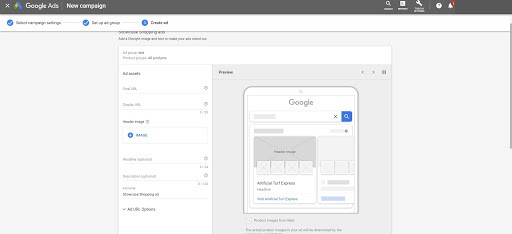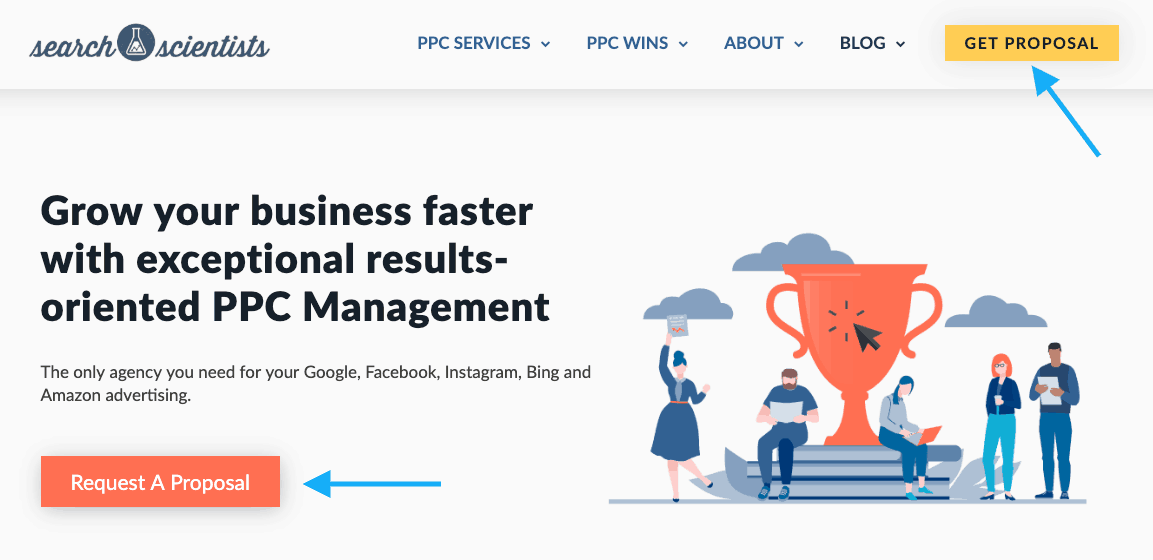Competing for attention in search engines can be challenging, especially if your SEM text ads don’t stand out among the competition.
How can you boost your ad’s visibility and conversions if your text doesn’t grab attention?
Poorly crafted SEM ad text could cost you not just clicks but potential customers.
This guide will teach you essential practices for crafting effective SEM ad text, helping your ads stand out, capture more attention, and achieve maximum results for your campaign.
Table of Contents
What Are the Basics of Crafting SEM Ad Text?
Search engine marketing (SEM) is a powerful tool that uses paid ads on search engine results pages (SERPs) to boost visibility and attract the right customers quickly.
Unlike search engine optimization (SEO), which focuses on building organic search visibility over time, SEM relies on paid ads to deliver faster results. This makes it a go-to strategy for businesses that need immediate impact and are ready to invest in paid search marketing.
The core of SEM lies in paid advertising, where businesses compete for top spots on search engine ranking pages. This competition is crucial because appearing prominently on SERPs increases the chances of attracting clicks and driving conversions. The pay-per-click (PPC) model used in SEM means that businesses bid on keywords relevant to their offerings, ensuring their ads show up when potential customers search for those terms.
But SEM success isn’t just about bidding on the right keywords—it’s about creating ad text that speaks directly to the audience. Crafting ad text that is relevant, engaging, and persuasive is key to standing out in the crowded digital space.
What Makes Up an Effective SEM Ad?
An effective SEM ad consists of several key components: headlines, descriptions, display URLs, and ad extensions.
Each of these elements plays a vital role in grabbing the user’s attention and clearly communicating your message.
For example, with responsive search ads, you can include up to three headlines and two descriptions, giving you plenty of space to showcase your value proposition and highlight what sets your product or service apart from the competition.
Ad extensions are another essential part of the puzzle, providing additional details that can boost the visibility and relevance of your ads.
There are different types of ad extensions, such as location, call, sitelink, callout, and structured snippets, each designed to serve a specific purpose.

How to Navigate Character Limits in SEM Ad Text?
Sticking to character limits is crucial for crafting effective SEM ad text. In Google Ads, you get up to 30 characters per headline and 90 characters for descriptions.
The Path fields in the display URL allow for 15 characters each.
These limits mean you have to be both concise and impactful. Your goal is to pack as much relevant and engaging information as possible within these constraints. Focus on highlighting key benefits, using strong action words, and ensuring that every character counts.
Being mindful of these limits helps ensure your ads are clear, compelling, and optimized for performance.
How to Craft Compelling Headlines for SEM Ads?
Crafting compelling headlines is an art that can make or break your SEM ad campaigns.
Eye-catching headlines boost the chances of users engaging with your ad, leading to higher click-through rates and more traffic.
One practical approach to creating effective headlines is to analyze your competitors’ ads.
By studying what they’re doing, you can spot trends, see what resonates with the audience, and learn what to avoid.
How to Effectively Use Keywords in SEM Ad Headlines?
Using highly relevant keywords in your SEM ad headlines is essential for matching search queries and boosting your ad’s visibility on search engine results pages (SERPs).
Start by placing your primary keyword at the beginning of the headline to immediately grab attention and align with search engine prioritization. Pair the keyword with a clear benefit to make the headline more compelling; for example, instead of just “Affordable Laptops,” try “Affordable Laptops Delivered Fast” to add value.
It’s important to use synonyms and variations of your keyword to avoid overstuffing while maintaining relevance.
Incorporating a question or a direct call-to-action with the keyword can also increase engagement. However, ensure that keywords fit naturally into the headline, enhancing its meaning and flow rather than feeling forced. Overusing keywords can lead to search engine penalties, negatively impacting your ad’s visibility.
Finally, regularly test different headline variations to determine which keywords and formats resonate best with your audience, helping you optimize for both relevance and performance.
How to Use Emotional Triggers and Power Words in SEM Ad Headlines
Incorporating power words into your SEM ad headlines can evoke strong emotions, making your titles more engaging and compelling. Words that create a sense of urgency, like “limited time” or “exclusive,” or those that spark excitement, such as “free” or “discover,” can trigger curiosity and prompt readers to click.
To maximize impact, combine these power words with emotional triggers that resonate with your target audience.
For example, pairing “exclusive” with a benefit like “Exclusive Deal on Premium Laptops” can create both excitement and a fear of missing out.
How to Write Persuasive Descriptions for SEM Ads
Your ad’s headline might grab attention, but without a persuasive description, potential customers may not see a compelling reason to click.
How do you convince users to choose your product or service over countless competitors? If your description fails to highlight what makes you unique, your ad could blend into the background, losing its impact.
Writing persuasive descriptions that clearly differentiate your offering is key.
Your descriptions should clearly highlight what sets your product or service apart from competitors, offering a compelling reason for users to engage. Focus on being concise yet impactful—every word should serve a purpose and quickly capture the user’s interest.
To keep your ads effective, regularly review and refine your descriptions. This ongoing process helps prevent stagnation and ensures that your ad remains relevant and compelling in the ever-evolving digital landscape.
Highlighting Unique Selling Points
Highlighting unique selling points (USPs) in your SEM ad text is crucial for standing out in a competitive market.
Start by clearly identifying what sets your product or service apart—whether it’s price, quality, speed of delivery, customer service, or unique features. Once you’ve pinpointed these differentiators, integrate them directly into your ad headlines and descriptions.
For example, rather than using a generic headline like “Great Deals on Shoes,” opt for something more specific like “Handcrafted Leather Shoes with Free Shipping” to immediately convey what makes your offering special.
Callout extensions in Google Ads are another effective tool for emphasizing USPs. They allow you to add brief, impactful statements like “24/7 Customer Support” or “100% Satisfaction Guarantee” below your ad, reinforcing your unique advantages without using up space in the main ad copy.
It’s important to be specific and concrete in your claims—avoid vague phrases like “best quality” or “great service,” and instead focus on tangible benefits that resonate with your target audience.
Call-to-Action Phrases
Call-to-action (CTA) phrases play a crucial role in driving user engagement and guiding desired actions.
We A/B tested multiple SEM text ads to determine which call-to-action drives the highest CTR.
To create effective CTAs, start with strong action verbs that clearly tell users what to do, such as “Buy Now,” “Get Started,” or “Sign Up.” These direct commands help to eliminate any ambiguity and encourage immediate action.
Incorporating a sense of urgency into your CTAs, like using phrases such as “Limited Time Offer” or “Act Now,” can prompt quicker responses from potential customers by tapping into the fear of missing out. This urgency can significantly increase click-through rates and conversions.
Personalizing your CTAs to align with the interests or needs of your target audience can also make them more compelling. For example, instead of a generic “Learn More,” you might use “Discover How We Can Help Your Business Grow,” which speaks directly to the user’s interests.
A/B testing different CTA variations is essential to identify which phrases and formats perform best.
By regularly experimenting with different approaches, you can continuously optimize your ad performance and ensure that your CTAs effectively drive the actions you want from your audience.
How Can Ad Extensions Boost Your SEM Ad Performance?
Ad extensions are a powerful tool in SEM that can greatly enhance the visibility and engagement of your ads.
By occupying more space on search results pages, ad extensions provide additional information that captures user attention and encourages interaction.
This increased relevance and appeal can lead to higher click-through rates and conversions, making ad extensions an essential component of a successful SEM strategy.
What Are the Different Types of Ad Extensions and How Can They Enhance Your SEM Strategy?
In SEM, various ad extensions serve specific purposes to enhance your ad’s effectiveness. Sitelink extensions, for example, allow you to direct users to specific pages within your website, improving navigation and guiding them to relevant content beyond just the main landing page.
This can enhance user experience by providing quick access to the information they’re most interested in.
Structured snippet extensions offer a way to add more context to your ads by highlighting key aspects of your products or services under predefined headers.
This additional detail helps potential customers understand your offerings better, increasing the likelihood of engagement.
How Can You Effectively Use Ad Extensions in SEM?
To maximize the effectiveness of your ad extensions, start by selecting the ones that align most closely with your campaign goals.
For instance, if you’re targeting local customers, use location extensions to display your business address, making it easy for nearby users to find you and increasing foot traffic.
Ensure you’re using multiple types of ad extensions simultaneously, such as combining sitelink extensions with callout extensions to provide additional value and information.
Regularly review the performance of your ad extensions. If a certain extension isn’t performing well, test a different one or tweak the content to better resonate with your audience.
Update your extensions with current offers, new products, or relevant information to keep them fresh and appealing.
How Can A/B Testing Improve Your SEM Ad Text?
A/B testing is essential for optimizing your SEM campaigns, as it enables you to experiment with different ad text variations and determine which ones perform best.
By systematically testing elements such as headlines, descriptions, and call-to-action phrases, you can identify the combinations that resonate most with your audience.
Start by changing one element at a time, such as tweaking a headline or altering a call-to-action, to isolate which change drives better results.
For example, you might test a headline that emphasizes urgency against one that highlights a unique selling point to see which generates more clicks.
Monitor the performance metrics closely, such as click-through rates (CTR) and conversion rates, to assess the impact of each variation.
Use the insights gained from these tests to refine your ad copy continuously, ensuring that your SEM strategy is always evolving based on what works best.
What Are Common Pitfalls in SEM and How Can You Avoid Them?
In SEM, certain pitfalls can undermine your efforts if not carefully managed.
One of the most significant mistakes is keyword stuffing—overloading your ad text with keywords in an attempt to boost visibility.
This not only disrupts the natural flow of your content but can also lead to penalties from search engines, ultimately harming your ad’s performance. To avoid this, focus on integrating keywords naturally and only where they add value to the user experience.
Another common pitfall is neglecting mobile optimization. With a growing number of users accessing content via mobile devices, failing to optimize your ads for mobile can result in missed opportunities for engagement and conversions.
Ensure your ads are responsive, with concise and clear messaging that’s easy to read on smaller screens.
How Does Overusing Keywords Hurt Your SEM Ads?
Overusing keywords in your SEM ad text can backfire, leading to less effective ads and a drop in content quality.
Although the goal might be to improve visibility, stuffing your content with too many keywords can make it sound unnatural and overly salesy, which can turn off potential customers.
To avoid this, concentrate on delivering a cohesive message that incorporates relevant keywords smoothly and naturally.
Instead of forcing keywords into your text, focus on how they fit within the context of your message.
Why Is Ignoring Mobile Users a Risk in SEM?
Ignoring mobile users in your SEM strategy can lead to missed opportunities for engagement and conversions.
Mobile users operate on limited screen space, so your ad text needs to be concise, clear, and compelling to quickly capture their attention.
Optimizing your ads for mobile is particularly crucial when using platforms like Bing Ads, where a significant portion of traffic comes from mobile devices.
We live, breathe & Dream Paid Traffic
Summary
Creating SEM ads that drive traffic and conversions can be challenging if you don’t know where to start.
Poorly crafted headlines, weak descriptions, or missed opportunities with ad extensions could be costing you valuable clicks and sales. Ignoring mobile users or stuffing ads with keywords might be holding your campaigns back.
Focus on mastering the essentials: write clear, compelling headlines, craft persuasive descriptions, and use ad extensions to enhance your ads. Regular A/B testing will help you find what works best, while avoiding common mistakes like keyword stuffing and neglecting mobile optimization will keep your ads effective.
Tools like Google Ads Keyword Planner can give you the insights you need to improve.
Frequently Asked Questions
What is the difference between SEO and SEM?
The primary difference between SEO and SEM lies in the approach to search visibility; SEO aims for organic results, whereas SEM relies on paid advertising for quicker outcomes. Understanding this distinction can help tailor your digital marketing strategy effectively.
Why is keyword research important for SEM?
Keyword research is crucial for SEM as it identifies terms that drive clicks and conversions, ultimately improving ad performance. By understanding the right keywords, you can effectively target your audience and maximize your advertising efforts.
How can I avoid keyword stuffing in my SEM ads?
To avoid keyword stuffing in your SEM ads, prioritize crafting a cohesive message that seamlessly integrates relevant keywords. This approach will enhance the ad’s quality and relevance without compromising clarity.
What are ad extensions and why should I use them?
Ad extensions enhance your ads by providing extra information, which improves visibility and increases engagement. Utilizing them can significantly boost your advertising effectiveness.
How often should I review and update my SEM ad text?
You should review and update your SEM ad text regularly to prevent stagnation and maintain relevance. Regular assessments allow for timely adjustments based on performance and market changes.
Check out more blog posts:

Technical SEO: A Complete Guide to Optimizing Your Website for Search Engines








